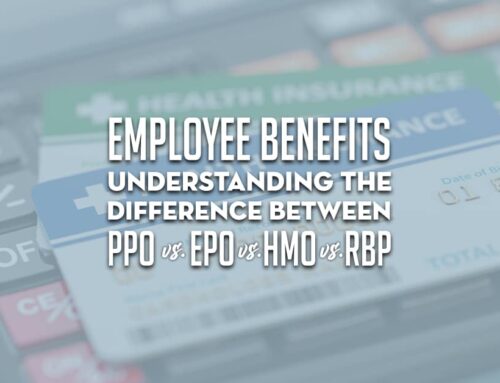Based on Census data from 2019, almost 50% of insured Americans have insurance coverage associated with a group plan provided by their workplace. At the same time, many people don’t have a full grasp of how exactly group health benefits work.
This guide will give you all the information you need as an employer who provides insurance to your employees.
The Basics of Group Health Benefits
Before we dig into the details, we want to share a few facts to be aware of. The first is that group health benefits are often available at a lower cost. This is possible because the insurer’s risk is spread out across a group of people instead of just one or a few.
In most cases, group health insurance requires at least 70% participation for the plan to be put in place.
Healthcare premiums are split between the members who have the insurance and the organization that provides it. In many cases, coverage can be provided for family members and dependents of employees for an additional fee.
A final fact to be aware of is that employers who offer group health insurance can take advantage of favorable tax benefits for doing so.
How Group Health Benefits Work
As a company or organization, you purchase a group health insurance plan and then offer it to your employees or members. These plans can only be purchased for groups. Individuals cannot gain access to them.
At least 70% participation (or similar) is needed for a valid plan. However, all plans are different so you need to consider the insurer, costs, plan types, and terms and conditions of each one before making a choice.
After a plan is chosen, the members can choose to decline or accept coverage. In some cases, the plans may be tiered. If this is the case, an employee could choose basic coverage or include add-ons based on their needs.
Premiums are split between the company and its employees. Insurance can also be purchased for the dependents of the workers.
In many cases, the cost of group health benefits is much less than for individual plans since the risk is across a larger group of people. All in all, the plan tends to be more affordable than others on the market since more people are a part of it.
To qualify for group health insurance, employees need to be on the payroll and the employee must pay payroll taxes. Those who are not eligible in most cases are temporary employees, seasonal workers, independent contractors, and retirees.
Employees on unpaid leave also cannot usually get group coverage until they return to work.
Coverage will be offered to the employee’s spouses and children under the age of 26. Employers can also choose to offer health benefits to unmarried partners of the opposite or same sex and the coverage must be the same as is offered to married spouses.
Benefits of Group Health Insurance
One of the most substantial benefits of group health insurance is that risk is spread out across all insured employees. This keeps premiums lower for the employees while insurers can manage risk better due to having a clear idea of who is being covered.
Insurers can also choose to have additional control using health maintenance organizations (HMOs). This means that providers contract with insurers and then provide the needed care to the employees who are a part of the plan.
An HMO model keeps costs as small as possible but it does lead to less flexibility in terms of who employees can see for their healthcare needs. The alternative is a PPO (preferred provider organization), which offers more choice about which physicians to see but can have higher premiums than you’d expect with an HMO.
Nearly all of the group health insurance plans available today are employer-sponsored. However, in some cases, there are other ways to purchase group coverage at an organization or association. For instance, insurance is available through the Freelancers Union, the American Association of Retired Persons (AARP), and wholesale membership clubs.
Group health insurance may provide tax benefits to the employees and the employer. The money that organizations pay toward premiums each month is tax-deductible, while the premiums from employees are pre-tax, which can cut down on the amount a worker needs to pay in taxes by decreasing taxable income.
Group Health Benefits Example
There are many healthcare insurers available to choose from. Blue Cross Blue Shield, United Healthcare, Cigna, and Aetna are some of the most prominent in Texas. They offer a variety of group health benefits for businesses of all types. Supplemental plans are also available, such as dental, vision, disability, and life insurance.
Small business plans in Texas are available for those who have up to 50 employees. Midsize and large group plans are available for businesses with more than 50 employees. In general, the larger the group, the more options and flexibility employers have in designing their health insurance plans.
Can Self-Employed Individuals Access Group Health Benefits?
As of 2020, about 26 million small businesses did not have any paid employees according to the US Small Business Administration Office of Advocacy. For self-employed people, you are considered a group of one individual.
Even though you might be self-employed, it is possible to purchase group health benefits for your business if you live in certain states. Check whether your state’s insurance department allows these plans to be sold to groups of one to be sure whether it’s an option for you.
Final Thoughts
Even if you run a small business, it’s important to take advantage of health insurance for your employees. When you work with a broker like Abbot Benefits Group, you can access great insurance plans including group health benefits. We’ll ensure you get a plan that works for you and your employees at a reasonable rate that provides coverage for all the essentials.





